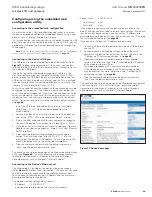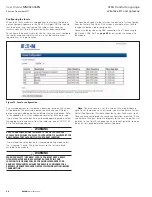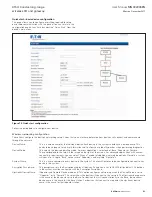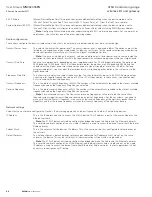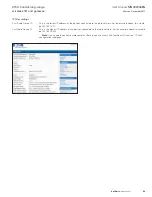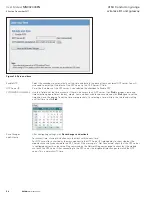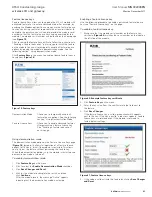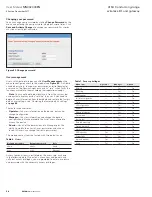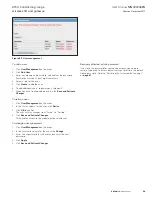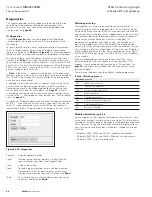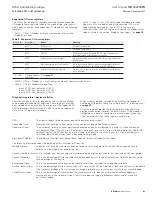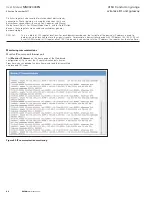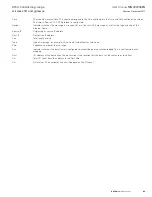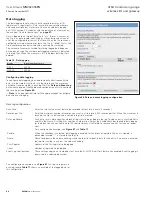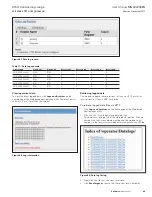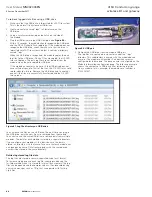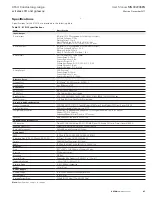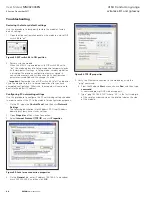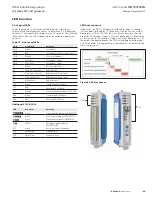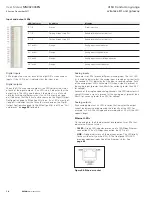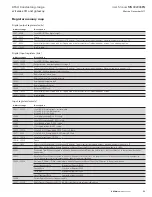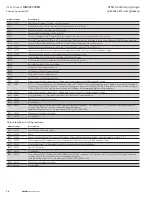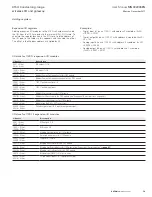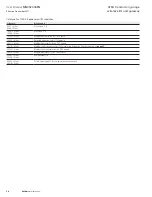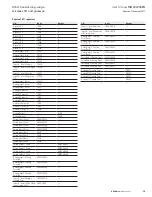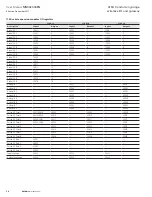
61
User Manual
MN032006EN
Effective December 2017
415U Condor-long-range
wireless I/O and gateway
EATON
www.eaton.com
Expansion I/O error registers
The 415U-2 has diagnostics registers allocated for each expansion
I/O module. These registers indicate the module type, error counts,
error codes, and so on. Each expansion I/O module has the following
registers.
•
30017 + Offset = Modbus error counter (number of errors the
modules has had)
•
30018 + Offset = Last 115S status code / Modbus error code
Register 30018 will display one of the following 115S status
codes (hexadecimal code 1–5 and 129). In the case of a
communications fault, the register will contain the Modbus error
code as listed in the section “Modbus Error Codes” on
page 78
.
Table 9. Expansion I/O error registers
Dec code
Hex code
Name
Meaning
1
0001
No Response
No response from a poll
2
0002
Corrupt/invalid
Corrupt or invalid data
3
0003
CRC Fail
CRC error check does not match the message. Indicates this a
different message or possible data corruption.
4
0004
Response did not match request
The response heard was not the correct ID; possibly heard other
RS-485 traffic.
5
0005
Message type did not match request
The response heard did not match the requested poll (different
command response); possibly heard other RS-485 traffic.
81
0129
Problem accessing local memory
Could not access register location, possibly because the register
is not initialized.
??01- ??0B
Standard Modbus
Error Codes
As per
page 78
•
30019 + Offset = Modbus Lost Link Counter (number of Communication Errors)
•
30020 + Offset = Modbus Module Type:
dec 257 (101 hex) indicates a 115S-11
dec 513 (201 hex) indicates a 115S-12
dec 769 (301 hex) indicates a 115S-13
Diagnostic registers—device statistics
Commonly used statistics for diagnostics and system monitoring
can be logged to onboard I/O Registers. These registers may then
be accessed via an external device using any of the supported I/O
transfer protocols (WIB, MODBUS, DNP3). By default, logging of
statistics to I/O registers is enabled.
When statistics logging is enabled, the statistics are logged to
Analog Input Registers. These are listed in detail in “Input registers”
on
page 73
.
Statistics registers provide the following information about the
upstream connection (Towards the base station). If the module is
configured as a base, or configured in manual mode without any
Client functionality, then these registers will be zero.
RSSI:
The signal strength to the upstream device (Repeater or base station)
Connected Time:
The amount of time the current upstream connection has been established (in hours)
Generation Count:
The number of times the current upstream connection has been established. This value is 1 when the device
first connects, then if the link is lost it increments once each time the link is re-established. Note that if both the
upstream device and the local device are re-started, the Generation count will reset to 1. If only one device is
re-started, then the generation count is designed to be retained.
Upstream IP Address:
The address of the Upstream device (Base, Repeater or Manual Mode Access Point).
The following information about the device uptime is available for all devices:
Module Uptime:
The amount of time the module has been powered on. You can compare this against the connected time to
determine if the module has been losing link.
Channel and radio statistics are available for all devices, and are available averaged over the last minute, last hour, and last 60-hour periods.
Channel Utilization:
This is the percentage of time the radio channel has been busy with radio transmissions from any devices within
receiving range of this device.
Background Noise:
This is the background noise level on the radio channel when the radio is not receiving valid data.
Retried Transmissions:
This is the percentage of radio transmissions that were successful, but required at least one re-transmission before
they were acknowledged. This statistic does not apply to broadcast transmissions, which are not acknowledged.
Failed Transmissions:
This is the percentage of transmissions that were unsuccessful due to not receiving an acknowledgement
message to any of the re-transmissions. This statistic does not apply to broadcast transmissions, which are
not acknowledged.



